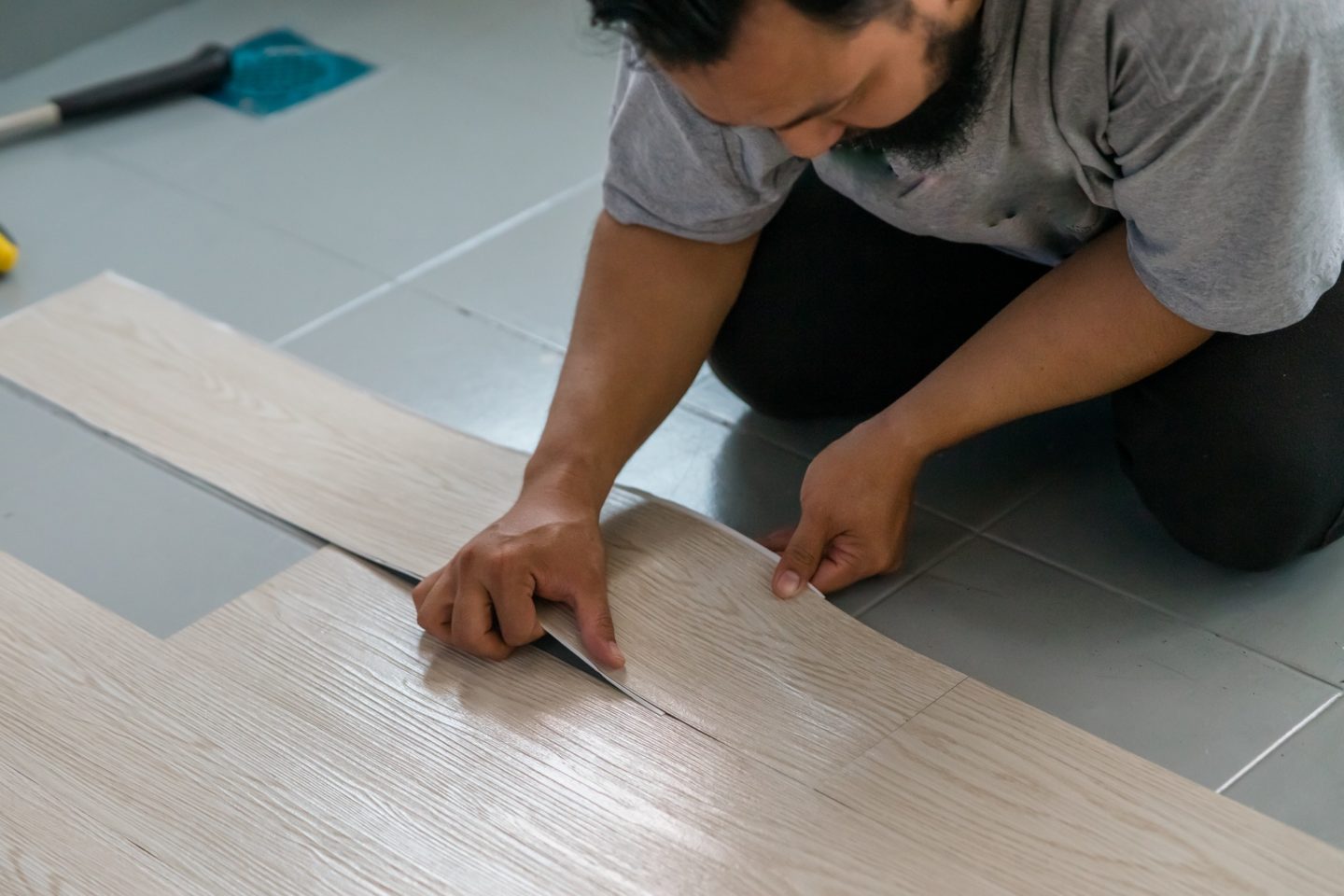What is PVC Flooring?
PVC flooring, short for polyvinyl chloride flooring, is a type of resilient flooring that is widely recognized for its versatility and practicality in various environments. This synthetic flooring option is composed primarily of thermoplastic polymers, which provide it with a number of advantageous characteristics. PVC is known for its durability, making it ideal for both high-traffic commercial spaces and residential areas. The material is resistant to wear and tear, ensuring that it can withstand the rigors of daily life without easily succumbing to damage.
There are several types of PVC flooring available on the market today. Among the most common are luxury vinyl tiles (LVT) and vinyl sheet flooring. LVT can mimic the appearance of natural materials, such as wood or stone, while providing PVC’s inherent resilience and ease of maintenance. On the other hand, vinyl sheet flooring typically comes in large rolls and excels in areas requiring a seamless surface, making it particularly suitable for environments prone to spills and moisture.
PVC flooring is popular for its numerous applications. In residential settings, it is often used in kitchens, bathrooms, and basements, where moisture resistance is paramount. In commercial spaces, its durability makes it an excellent choice for retail stores, hospitals, and educational institutions. Additionally, the variety of colors, patterns, and textures available allows for customization, catering to the aesthetic preferences of homeowners and designers alike. Furthermore, PVC flooring is relatively easy to install and maintain, requiring little more than regular cleaning to sustain its appearance over time. This combination of practicality, durability, and visual appeal positions PVC flooring as a leading choice in the flooring industry.
Factors Affecting the Service Life of PVC Flooring
The service life of PVC flooring is influenced by multiple factors that can significantly determine its durability and overall performance. One of the primary considerations is the quality of installation. Proper installation is crucial; if the flooring is not installed according to manufacturer specifications, it may lead to premature wear or damage. Specifically, ensuring the subfloor is adequately prepared and level can prevent issues such as buckling or curling over time.
Another critical element is the type of PVC flooring selected. The market offers various forms of PVC flooring, such as vinyl tiles and sheets, each with distinct characteristics and potential lifespans. For instance, sheet vinyl often provides superior moisture resistance compared to tiles, making it a preferable option for areas prone to spills, such as kitchens or bathrooms. Additionally, the thickness and construction of the flooring can greatly affect its resilience to wear and tear, as thicker layers typically offer improved performance.
Maintenance practices also play a vital role in extending the life of PVC flooring. Regular cleaning, including sweeping and damp mopping with appropriate cleaning agents, helps reduce the accumulation of dirt and grime. Furthermore, the application of protective coatings can enhance wear resistance, thereby prolonging the flooring’s lifespan. Adequate moisture control is equally important; excessively damp environments can lead to mold growth and damage the integrity of the flooring, while excessive dryness may cause it to crack or warp.
Foot traffic levels must also be considered, particularly in commercial settings where high traffic can result in increased wear. Choosing the right type of PVC flooring based on expected usage can help mitigate this wear. Lastly, exposure to sunlight is another factor that can impact the coloring and structural integrity of PVC flooring; utilizing window treatments to minimize direct sunlight can contribute to better longevity. Understanding these various factors can guide homeowners and businesses in making informed decisions regarding the selection, installation, and maintenance of PVC flooring.
Average Lifespan of PVC Flooring
PVC flooring is widely recognized for its durability and long service life, making it a popular choice for both residential and commercial spaces. Typically, the average lifespan of high-quality PVC flooring ranges from 15 to 30 years, depending on various factors such as the thickness of the material, the quality of installation, and the level of maintenance it receives throughout its use. Premium grades of PVC flooring tend to outperform their less expensive counterparts, thus providing a longer lifespan in demanding environments.
Warranties offered by manufacturers often reflect the expected lifespan of the flooring. Most warranties for PVC flooring range from 10 to 25 years, suggesting that manufacturers stand behind their products with the expectation of durability and performance. It is essential to read the fine print of these warranties, as they frequently cover specific elements such as wear and tear but may exclude issues that arise from improper installation or maintenance.
The actual lifespan of PVC flooring can also be influenced by environmental and usage factors. For instance, high foot traffic areas experience more wear than residential settings, potentially reducing the effective lifespan. Additionally, exposure to sunlight, humidity, and temperature fluctuations can also impact the longevity of PVC flooring. Regular cleaning, use of protective mats, and following the manufacturer’s care instructions greatly contribute to maintaining the integrity of the flooring over time.
Understanding these factors can better inform consumers on what to expect from PVC flooring. It is advisable to invest in quality products and professional installation to ensure that the flooring achieves its optimal lifespan. When selecting flooring options, considering the average service life of PVC flooring can significantly impact both short-term satisfaction and long-term value.
Extending the Life of PVC Flooring
Maximizing the longevity of PVC flooring requires a combination of proper care and maintenance techniques that can significantly enhance its appearance and functionality over time. One of the most effective ways to extend the service life of PVC flooring is through regular cleaning. Using a damp mop with a mild detergent specifically designed for vinyl surfaces can help maintain the flooring’s shine and prevent dirt buildup. It is essential to avoid harsh chemicals or abrasive materials that could damage the surface; instead, gentle cleaning solutions should be favored.
The placement of furniture is another critical factor. Using protective pads under furniture legs can prevent scratches and dents that might compromise the flooring’s integrity. Additionally, it is advisable to rearrange heavy furniture periodically, as prolonged pressure on a single point can lead to indentation. Practicing caution when moving furniture can also avoid unnecessary damage.
To further protect PVC flooring, the use of rugs and mats is highly recommended, especially in high-traffic areas like entryways and living rooms. These mats can capture dirt and moisture, preventing it from reaching the flooring beneath. It is important that these mats have a non-slip backing to ensure they do not pose a tripping hazard while simultaneously safeguarding the flooring.
Finally, scheduling periodic professional maintenance can prove beneficial in keeping PVC flooring in prime condition. Experts can perform deeper cleaning methods and inspections, addressing any potential issues before they turn into major problems. This level of maintenance ensures that the flooring remains functional and visually appealing for many years. By following these practical steps, homeowners can effectively extend the life of their PVC flooring, ensuring it remains a valuable asset to their living space.



